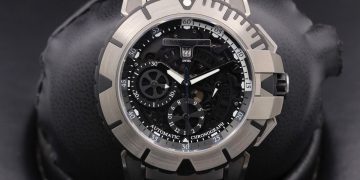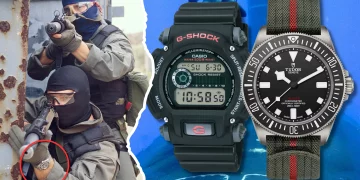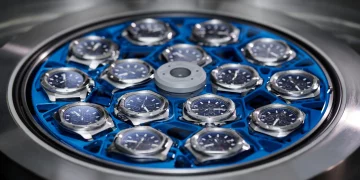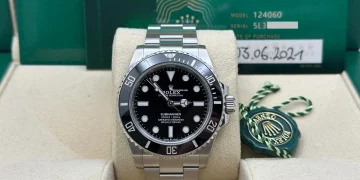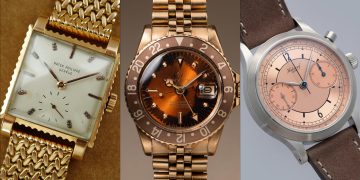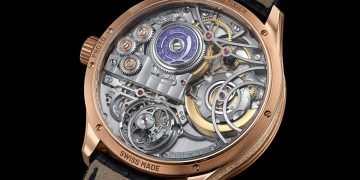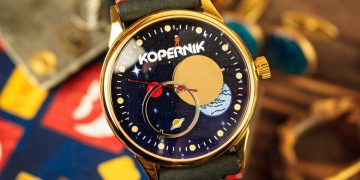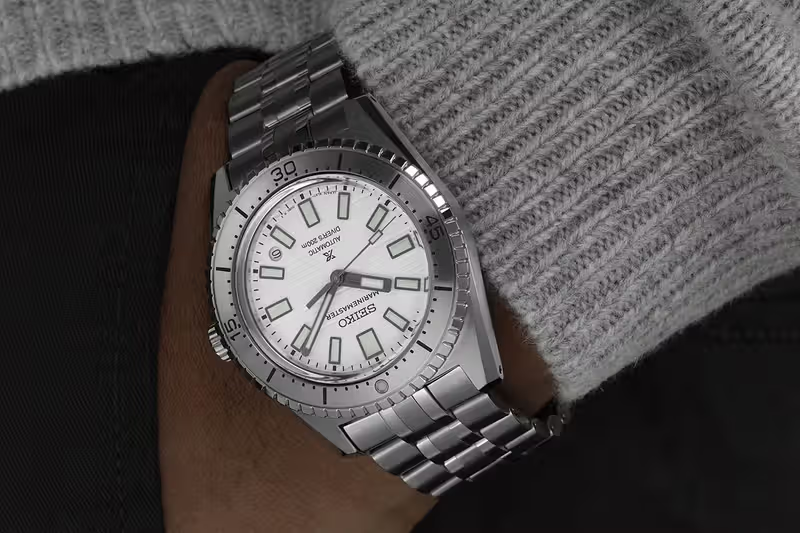Introduction:
Seiko is a name that has become almost synonymous with precision, reliability, and innovation in the world of timepieces. For decades, the Japanese watchmaker has been at the forefront of creating durable and functional watches for a wide range of purposes. But it is in the niche of diving watches where Seiko truly shines. From the early 1960s, when Seiko released its first true diving watch, the 62MAS, to today’s high-tech models in the Prospex line, Seiko has continuously refined and advanced its diving watch technology.
But what is it about Seiko’s diving watches that have made them so popular, not just among casual divers, but also professionals and enthusiasts worldwide? What role does technology play in ensuring that these timepieces remain at the top of their class?
In this article, we will explore the technological innovations that Seiko has pioneered and perfected over the years. We’ll dive deep into the materials, designs, and mechanisms that make Seiko’s diving watches stand out, discussing everything from water resistance and bezel systems to movements and solar-powered technologies. We will also look at how Seiko balances cutting-edge tech with user-centered design, making their watches both highly functional and accessible to divers of all levels.
By the end of this article, you’ll not only have a thorough understanding of Seiko’s contributions to the world of diving watches but also a deeper appreciation for the company’s commitment to technology, precision, and performance. So, what makes Seiko’s diving watch technology stand out? Let’s dive in and explore.
1. Seiko Diving Watches: A History of Innovation
Seiko’s relationship with diving watches dates back to the 1960s, with the release of the 62MAS, which is considered one of the first true diving watches from Japan. At a time when Swiss watchmakers dominated the diving market, Seiko’s breakthrough with the 62MAS was monumental. It was a reliable, robust timepiece that offered water resistance up to 150 meters, which was impressive for its time.
The 62MAS also featured a rotating bezel — an essential tool for divers to track their dive time. Seiko was one of the first to introduce this crucial element in their watches, which would become a defining feature in modern dive watch designs. Additionally, the automatic movement in the 62MAS set the stage for Seiko’s mechanical innovations.
Over the decades, Seiko has released many iconic diving models, including the Turtle, Sumo, Marinemaster, and the Seiko Prospex series. Each of these models incorporated improved technologies that made them more suitable for deep-sea exploration, such as increased water resistance (up to 1000 meters), improved lume for legibility, and the development of Helium Escape Valves for professional divers.
2. Key Technologies in Seiko Diving Watches
Water Resistance: The Foundation of Diving Watch Tech
Water resistance is the most fundamental technology in a diving watch. Seiko has long been a leader in creating watches that can withstand extreme underwater pressure. The company’s diving watches meet or exceed the ISO 6425 standards, which are the international benchmarks for diving watch performance.
In particular, Seiko’s diving watches offer outstanding depth ratings and are designed to be reliable even in the harshest conditions. Seiko watches such as the Marinemaster 1000m are built to resist water pressure at depths well beyond what most recreational divers encounter.
Helium Escape Valve (HEV)
For professional divers who spend extended periods at extreme depths, a Helium Escape Valve (HEV) is a critical component. When divers ascend too quickly, the helium gas absorbed in the watch case under high pressure can cause the crystal to pop off due to internal pressure. Seiko’s HEV technology allows for the controlled release of helium, thus preventing such occurrences and ensuring the watch maintains its integrity.
Luminous Technology: LumiBrite
Luminous markers are essential for underwater visibility, and Seiko has been a pioneer in developing LumiBrite technology. LumiBrite is a high-performance luminescent material that charges quickly and glows brightly for hours, ensuring visibility even in pitch-black underwater environments.
Unlike many other lume materials, which require external light sources to charge, LumiBrite retains its luminescence for longer periods and requires less recharging. This is a game-changer for divers who need to rely on their watch in low-light conditions.
Bezel Systems
The rotating bezel is one of the most important features of a diving watch, and Seiko has perfected this technology over the years. Seiko diving watches are equipped with bi-directional rotating bezels that are easily manipulated, even while wearing diving gloves.
The ratcheting system in the bezel ensures it won’t rotate unintentionally, allowing divers to track elapsed dive time accurately. Seiko’s technology has made their bezels highly durable and resistant to wear, ensuring that the bezel remains fully functional over the long term.
Case Materials: Titanium, Stainless Steel, and Ceramic
Seiko uses a variety of case materials in its dive watches to ensure strength, lightness, and corrosion resistance. Titanium is a popular choice for Seiko’s higher-end dive watches due to its lightweight and resistant nature. It’s ideal for divers who need a watch that doesn’t add significant weight to their wrist.
Stainless steel remains a tried-and-true option for many of Seiko’s diving models due to its durability, but Seiko also incorporates ceramic in some cases, offering scratch resistance and a luxurious finish that stands the test of time.

3. Seiko’s Prospex Series: A Technological Revolution
The Seiko Prospex line represents the pinnacle of Seiko’s diving watch technology. Introduced in the early 2000s, the Prospex series has incorporated cutting-edge technology, making it the brand’s professional line of dive watches.
- Solar Technology: One of the standout features of the Prospex series is the integration of solar-powered movements, which eliminate the need for battery replacements. The Seiko Solar Diver models are equipped with solar cells that convert light into energy, providing a continuous power source for the watch. This eco-friendly technology ensures that the watch never runs out of power during a dive.
- Prospex Watch Movements: In the Prospex models, Seiko uses movements that are specifically designed for diving, such as the Caliber 8L35 and Caliber 4R36. These movements are crafted to withstand the harsh conditions of deep-sea exploration and to maintain excellent timekeeping accuracy.
4. Seiko Dive Watches: The Integration of Digital Tech
While Seiko is renowned for its automatic and quartz movements, the company has also incorporated digital technology in some models. The Seiko Velatura series, for example, features analog-digital hybrid designs that provide both traditional timekeeping and modern functionality. These watches combine the simplicity of an analog dial with the versatility of a digital readout, providing divers with essential information such as depth readings, dive time, and water temperature.
5. Seiko Diving Watches: Performance in Extreme Conditions
Seiko diving watches are tested to perform under some of the most extreme conditions. They undergo rigorous pressure testing and field tests to ensure they meet the standards required by professional divers. This testing includes deep-sea dives, temperature fluctuations, and shock resistance tests, which ensure that Seiko’s watches can survive even in the most extreme diving environments.
6. Conclusion: Why Seiko’s Diving Watch Technology Continues to Set the Standard
Seiko has been an undisputed leader in the world of diving watches, thanks to its commitment to technological innovation. From its early days with the 62MAS to the current Prospex series, Seiko continues to push the envelope with cutting-edge technology, ensuring that divers can rely on their timepieces in the harshest conditions. Whether it’s through helium escape valves, solar-powered movements, or advanced luminous technology, Seiko’s diving watches stand as a testament to the brand’s dedication to performance and precision.
As Seiko continues to evolve, one can only expect more technological advancements that will further cement its position as a leader in diving watch technology.



